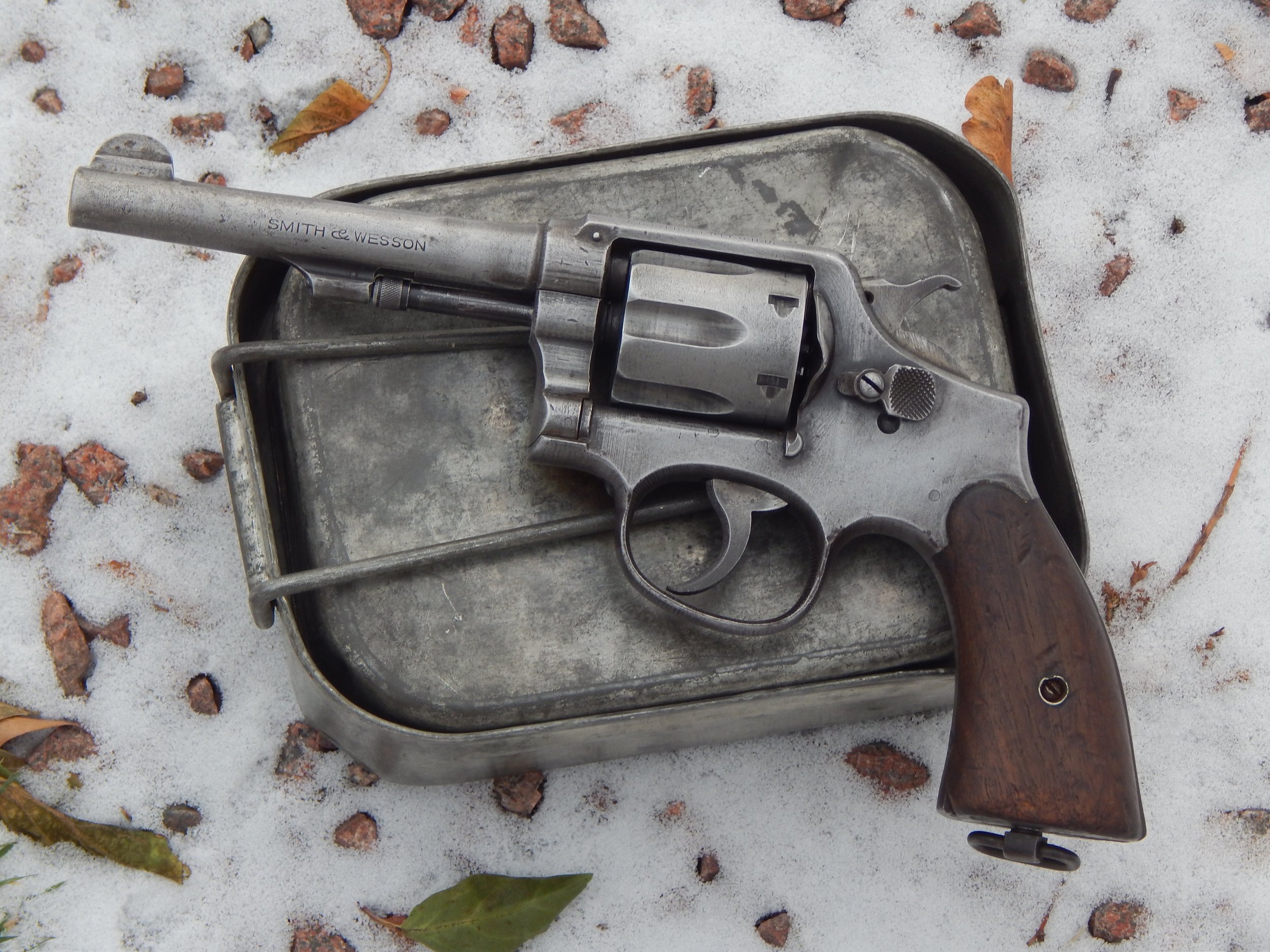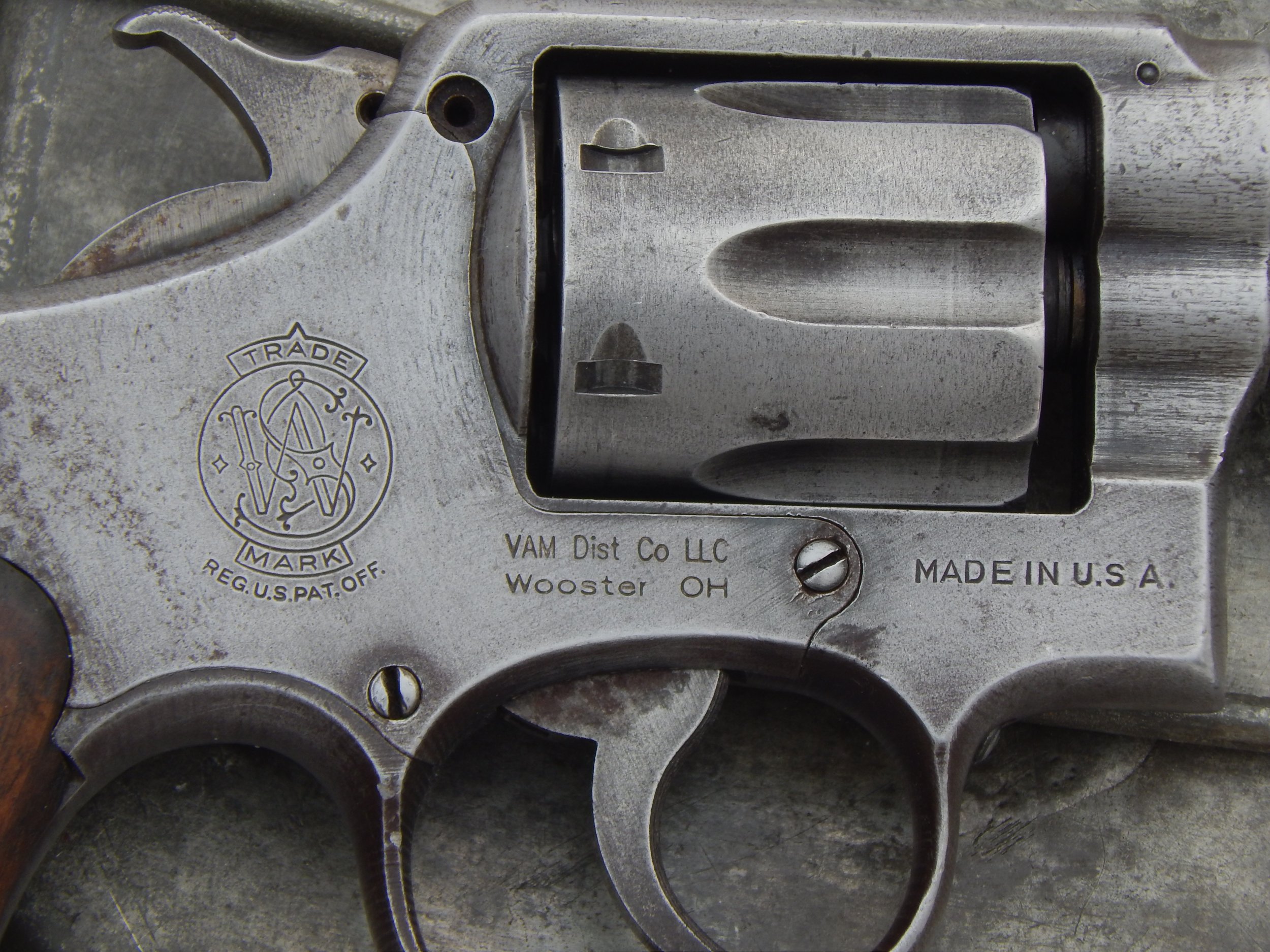British Victory Revolver
With the onset of the Second World War the British found themselves short of handguns, and just as they had in the Great War they looked across the Atlantic for a solution. They found the popular Smith & Wesson Military and Police Model, and promptly placed an order for a large number in their .38/200 cartridge.
The History
Deliveries began almost immediately, with these M&Ps being standard pre-war quality commercial models with a high quality blued finish and checkered grips. The demands of the war, however, particularly after the entry of the United States into the conflict in late 1941, resulted in a need to simplify production.
The result was what would come to be known as the Victory Model, with a sandblasted and parkerized finish and smooth walnut grips. Still chambered in the .38/200 for the British contracts (Those intended for US service were produced in .38 Special), these featured a “V” prefix to their serial number, which led to the common, but unofficial, “Victory” name being applied. These revolvers were issued to British forces concurrently with the standard issue Enfield and Webley .38/200 revolvers, and were likewise widely issued to commonwealth forces during the war.
The five inch barrel typical of the British Victory Models. Also note the simple half moon front sight
The Victory was also purchased by the US in .38/200 in significant numbers, mostly being distributed by the OSS (Office of Strategic Services, the precursor to the modern CIA) to various resistance forces throughout the occupied world. These weapons, as well as most of those sent to the British Empire, were marked with US acceptance markings before being issued or sent out via Lend/Lease, as it was seen that the US Government needed to take official possession of them before lending them out to foreign powers.
In British service the Victory proved quite popular, with many preferring it over the top-break Webley and Enfield designs due to their better triggers and tighter actions. Its ability to fit nicely into the standard issue P1937 canvas web holster also served to make it easy to issue with standard British web gear.
The Design
The sideplate of the revolver, showing the prominent Smith and Wesson trademark as well as its American origin. The VAM marking is a later US importer
The Smith and Wesson M&P, later known as the Model 10, is in many ways the quintessential revolver of the 20th Century, with almost six million produced in all varieties over over a century, remaining in production to the present day.
The plain walnut grips standard to Victory Revolvers
It is a single/double action revolver with a swing-out cylinder, with simultaneous ejection via a manually operated rod. It is essentially the barebones basic edition of the Model 10, with plain, uncheckered grips and fixed sights. A tried and true revolver design, the Victory remained reliable and simple in both police and military use around the world.
This Example
The US acceptance markings on the top strap of the revolver
This example of the Victory has certainly seen some service. Produced in around 1943, its parkerized finish has been heavily worn, leaving what is (in the author’s opinion) a rather nice looking revolver. It bears an import mark on the right side of the frame, and is devoid of military markings aside from the US property stamps on the top strap, with the GHD inspectors proof standard for wartime Smith & Wesson designs.
Internally and mechanically this revolver is in excellent condition, with a very crisp action and tight lockup, with timing also remaining good.
Opinions
The “V” prefix on the serial number, which gave rise to the “Victory” moniker
The Victory Model in .38/200 is an absolute joy to shoot, with a crisp, smooth action and very mild recoil. Accuracy is quite acceptable, although the stopping power of the cartridge does leave something to be desired. There is otherwise relatively little to say about the Victory, being an example of one of the most prolific revolver designs ever produced, it is clear why the design was as popular as it was.
Canadian solders on the practice range with their Victory Revolvers
Observed Values and Frequency
Updated: February, 2024
AVERAGE VALUE (USD): $300 - $500
FREQUENCY: Uncommon
COLLECTOR’S NOTES: Less desirable than the .38 Special US version identified by its shorter barrel







